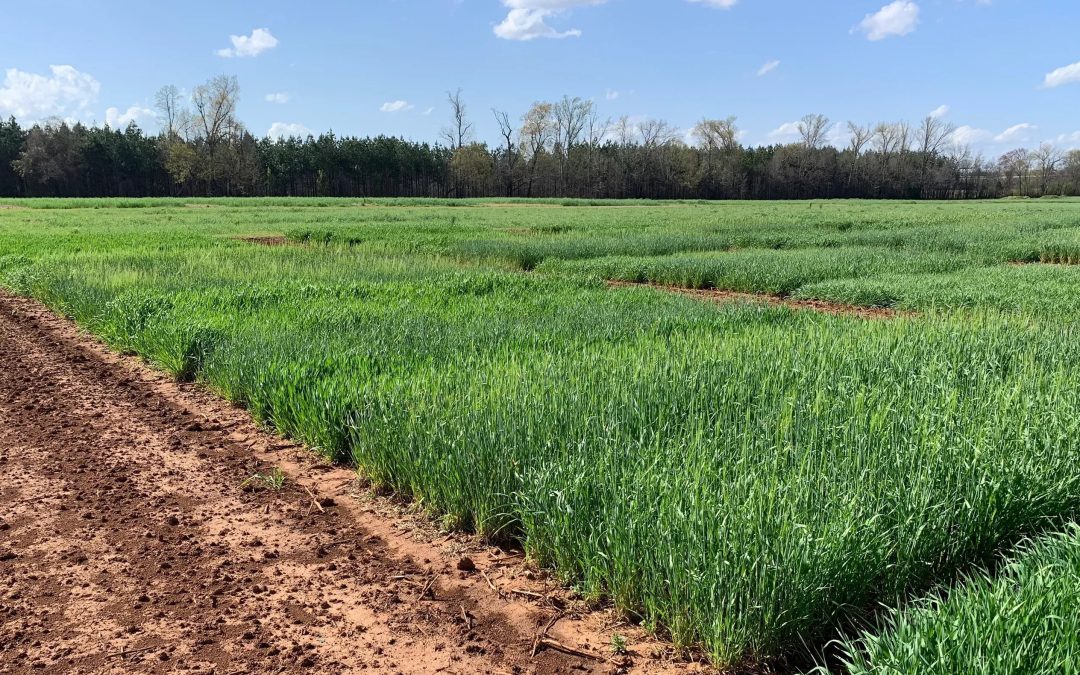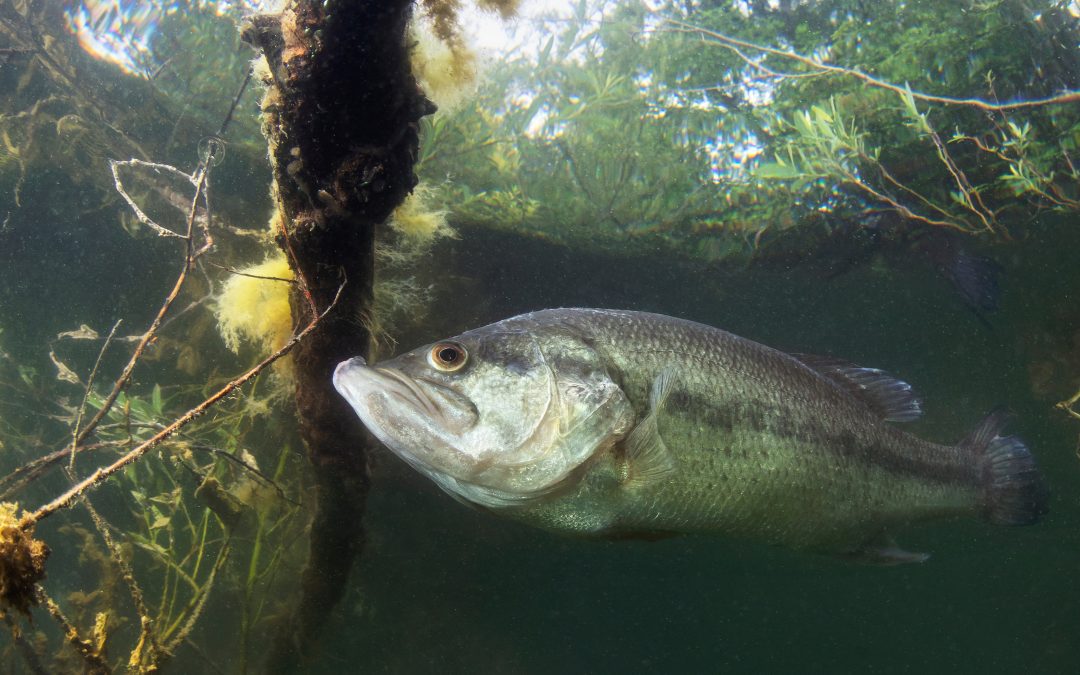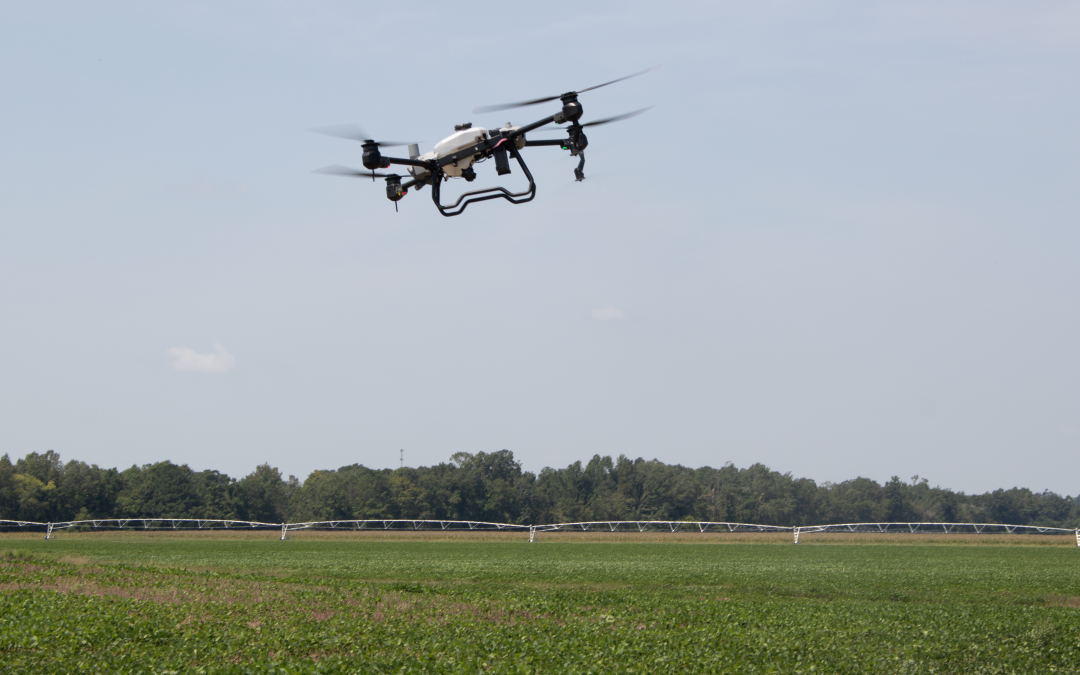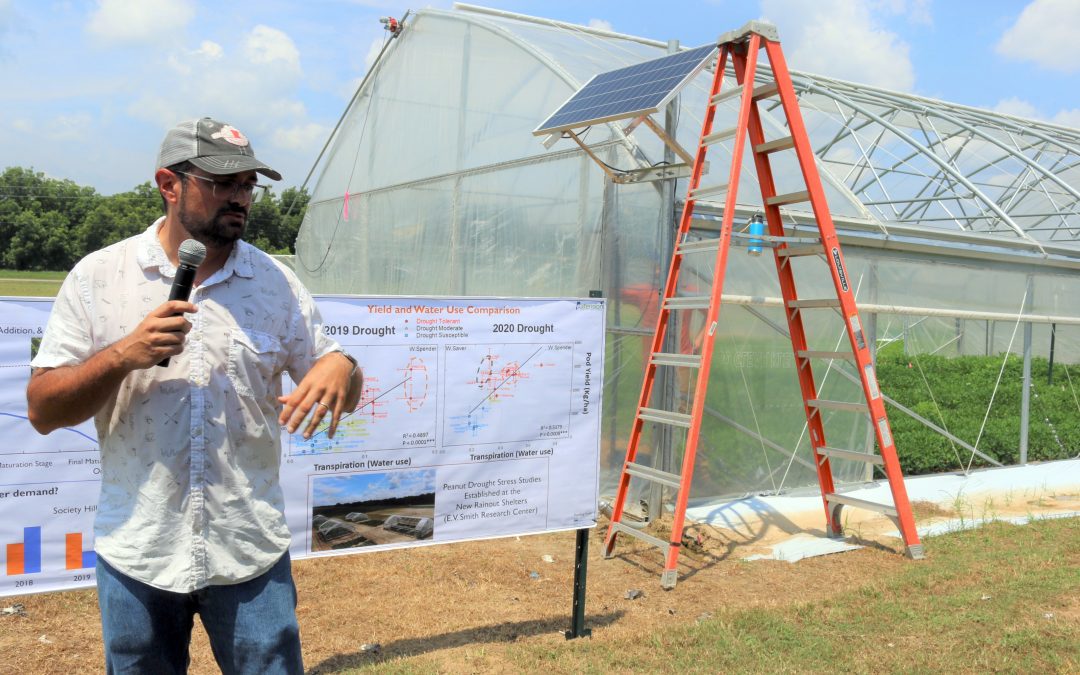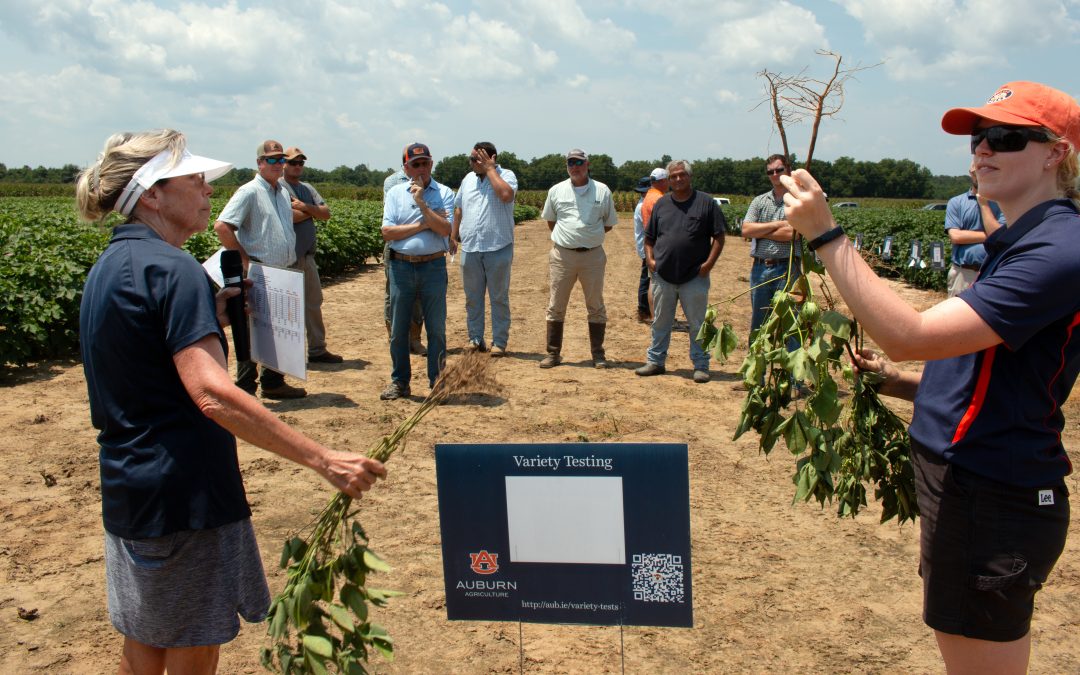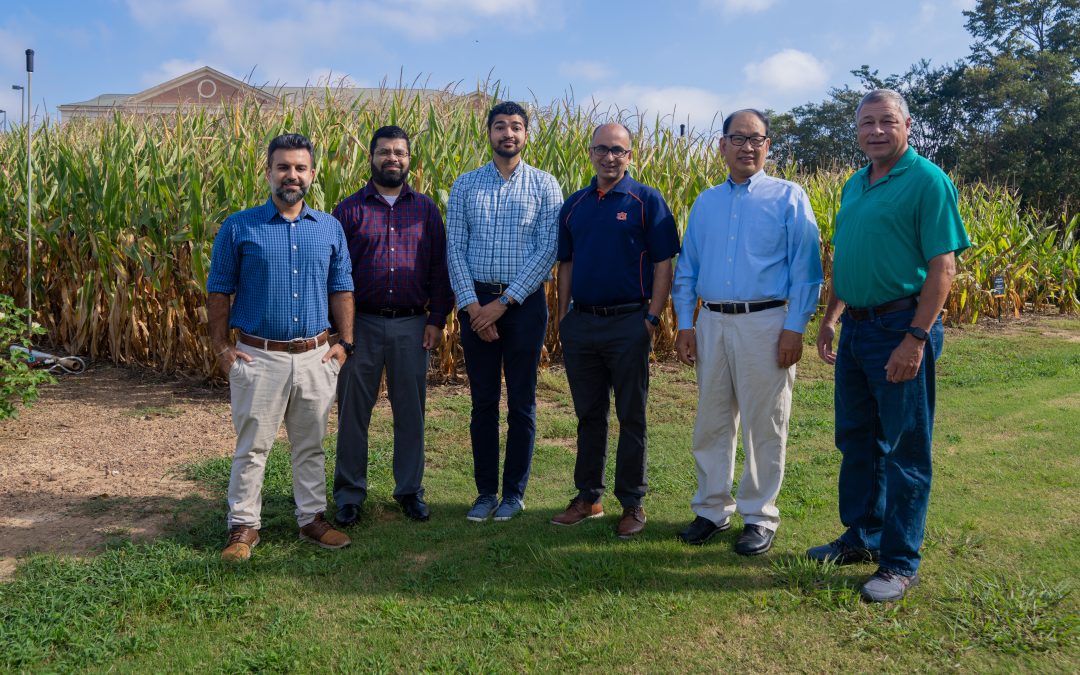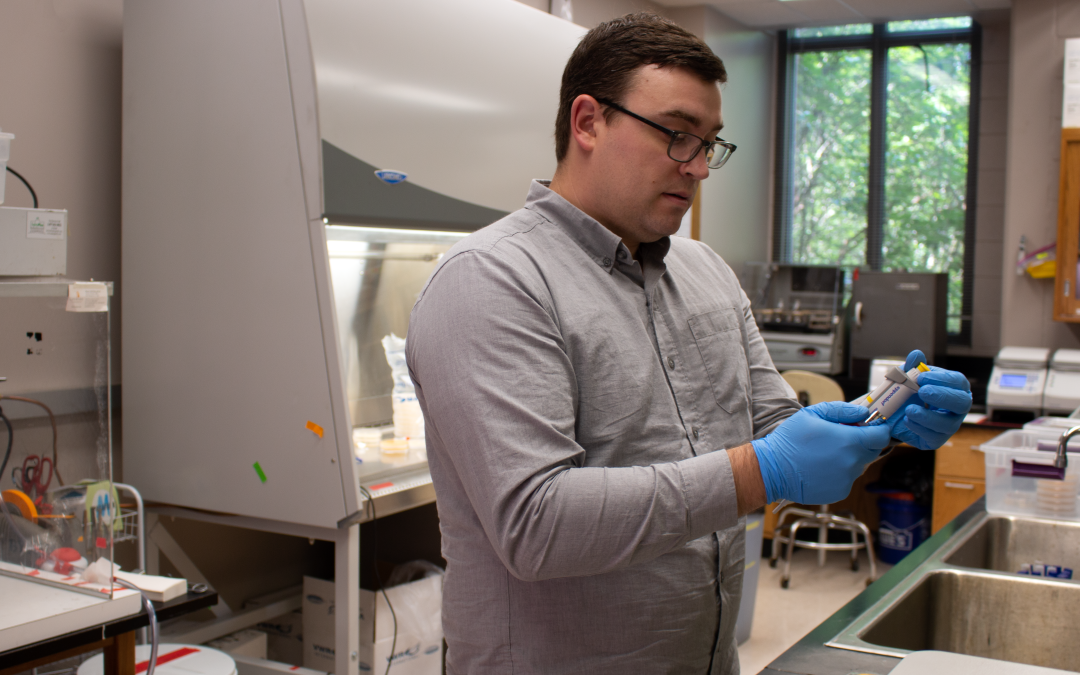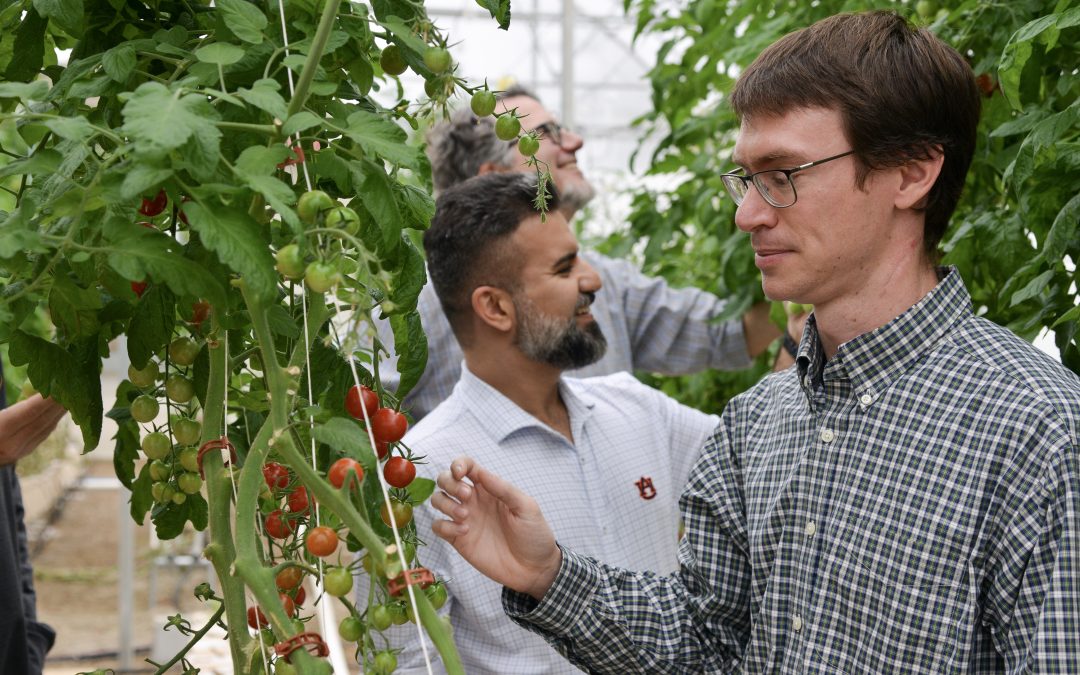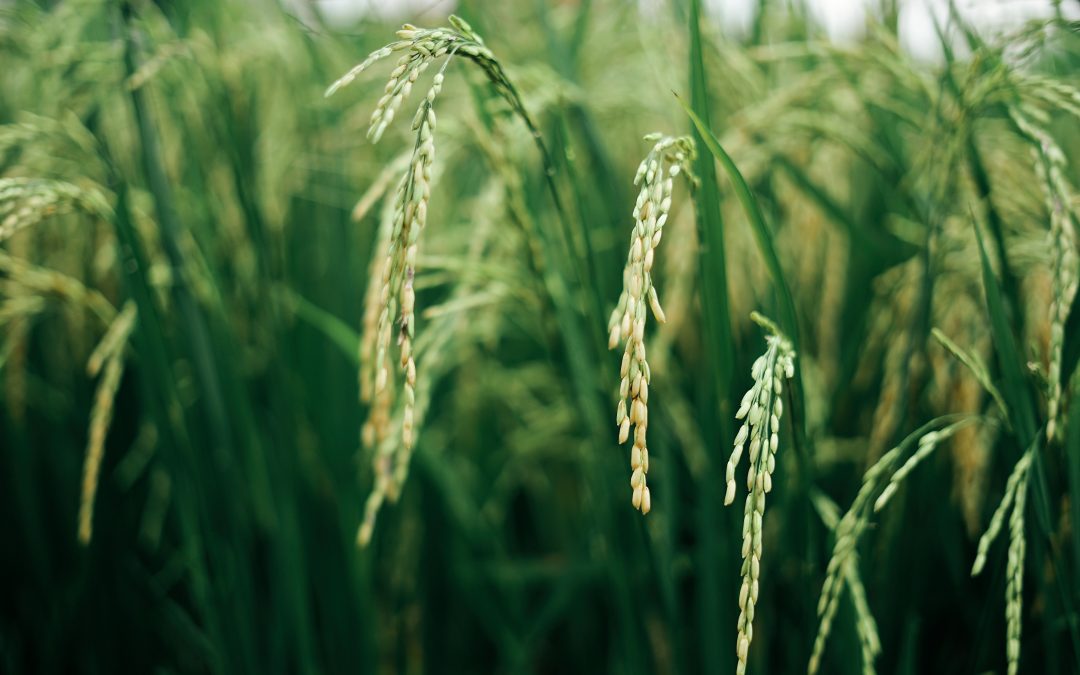U.S. peanut producers have seen peaks and valleys in their yields over the years, prompting researchers at Auburn University to analyze these inconsistencies and search for ways to boost and maintain profitable crops.
An analysis of yields since 1970 made by a College of Agriculture economist shows that yields have been flat for the past 12 years, since reaching a record-high of more than 4,000 pounds per acre in 2012.
“Putting into context where this year’s U.S. average yield of 3,740 pounds per acre falls historically, we need to look at peanut yield trends since 1970,” said Wendiam Sawadgo, assistant professor in the Department of Agricultural Economics and Rural Sociology and a researcher with the Alabama Agricultural Experiment Station.
The 2023 average yield was down 7% from 2022 and the lowest yield since 2016.
“The majority of states’ peanut yields declined in 2023, relative to the previous year, largely due to drought in the South,” Sawadgo said. “The major peanut-producing states of Alabama and Florida both saw 17% decreases in their yields. Georgia, the leading state, had a 3% decline to 4,070 pounds per acre.
Over the entire 1970-2023 period, peanut yields increased by 36 pounds per acre annually, on average, but with considerable variations, he said.
“From 1970 to 2000, peanut yields increased by an average of 7 pounds per year,” Sawadgo said. “Then, in 2001, peanut yields reached 3,000 pounds per acre for the first time, and over the subsequent decade, peanut yields would increase by 57 pounds per year on average.”
The substantial yield increase from 2001-2012 likely was driven by the introduction of Georgia-06G, a high-yielding runner-type peanut cultivar that was released in 2006 and soon gained a significant market share in the Southeast, he said.
“In 2012, peanut yield surpassed 4,000 pounds per acre for the first time. However, over the past 12 years, peanut yields have been flat and averaged 3,948 pounds per acre. In fact, the 2012 mark has yet to be topped.”
Peanut yields are an even more critical aspect for profitability due to increased input prices, he said.
“Production costs are expected to remain elevated in 2024 at $598 per ton, assuming yields equal the five-year average,” Sawadgo said. “This means that even with peanut prices expected to reach a decade-high $550 per ton, producers would still likely operate at a loss. Strong yields would help lower these breakeven prices, but the recent yield volatility raises concerns that this might not occur.”
Meeting the challenge of stagnant peanut yields
Helping Alabama peanut producers improve yields while at the same time managing input costs is a primary goal of researchers at Auburn University.
This past year was one of the most difficult for Alabama in quite some time, said Kris Balkcom, Auburn University Extension peanut agronomist, who visits hundreds of farmer fields each year during the growing season.
“This past year was the first time in many years that our state average dropped below 3,000 pounds per acre,” Balkcom said. “Our estimated yield will be around 2,700 pounds per acre by the time it’s all said and done with. This was mainly because of the lack of rainfall in the lower half of the state from east to west.”
But lack of rain wasn’t the only reason for disappointing yields in 2023, he said. “We had some extreme temperatures last year for a couple of weeks solid without a break, when not only were the daytime temps high but the nighttime temperatures were higher which didn’t allow the plants to breathe.”
Since the majority of Alabama’s crop is not irrigated, most growers are dependent on rainfall to help produce their crop, Balkcom said, and this factor is dictating current field research.
“We continue to look at and work more with cover crops and irrigation in addition to VRI or variable rate irrigation to best utilize the water with do have,” he said. “We are also using VRI to try and help us measure the benefits of a cover crop.”
Balkcom agrees that growers’ margins are extremely tight this year due to a lower market price and continuing high input costs. Still, he expects peanut acreage to increase in Alabama.
“Producers are really trying to watch their inputs and not overspend but at the same time not cut themselves short and reduce their yield,” he said. “We will certainly see an increase in peanut acres this year because the cotton prices are too low in relation to input costs, and acres will move from cotton to peanuts and soybeans. Most producers feel comfortable growing more acres of these legumes in the years when fertilizer costs and other expenses remain high.”
Researchers also are conducting integrated pest management peanut disease trials at five Experiment Station outlying units, including the Wiregrass Research and Extension Center, the Brewton Agricultural Research Unit, the Gulf Coast Research and Extension Center, the E.V. Smith Plant Breeding Unit and the Chilton Research and Extension Center.
“In Alabama and the Southeastern U.S., there are several foliar and soilborne diseases that can cause severe yield losses in peanuts,” said Amanda Scherer, assistant professor and Extension plant pathologist
The most economically important diseases include Tomato spotted wilt virus (TSWV), early and late leaf spot, white mold, and root-knot nematodes, which if left unmanaged can cause yield losses of 50% of more.
These diseases are managed through a combination of management practices including planting resistant peanut varieties, fungicide and insecticide applications, planting date selection, crop rotation, tillage practices, seeding rates and row patterns.
“Our research focuses primarily on evaluating the reaction of susceptible and tolerant peanut varieties to and the impact of commercial and experimental fungicides on these diseases,” Scherer said. “Additional disease research is also being conducted by or in collaboration with entomologist Scott Graham, agronomist Kris Balkcom and variety trial coordinator Henry Jordan.”
Resistant varieties continue to play a major role in preventing or minimizing peanut disease damage, she said.
“Over the last few years, several new peanut varieties have been released to help reduce losses,” Scherer said. “FloRun T61, released in 2020, is a high-oleic, medium-seed size variety with high yield potential and high grading with resistance to TSWV. TifNV-HG is another newly released high-oleic, high yielding variety with root-knot nematode and TSWV resistance as a replacement for TifNV-High O/L. Georgia-20VHO, also released in 2020, is a high-grading, high-O/L ration runner type peanut with TSWV resistance. These varieties, among others, will be available for planting this year.”
Weather conditions in Alabama are highly conducive to disease development, and producers must use a variety of strategies to minimize yield losses, Scherer said.
“Producers are encouraged to diversify their varieties across planting dates to minimize losses,” she said. “Resistant peanut varieties are going to perform best in fields with a history of disease and high risk-factors, especially in south Alabama. However, growers can still utilize their favorite susceptible variety in low-risk conditions or in medium to high-risk fields with the aid of preventive fungicides.”
The Auburn University Crop Physiology Lab, led by Alvaro Sanz-Saez, in collaboration with the AU Peanut Breeding Program, led by Charles Chen, also are working to increase peanut yields through a project that seeks to understand the different mechanisms of peanut drought tolerance. One peanut cultivar being tested is AU-NPL 17, the first runner peanut variety released by Auburn’s peanut breeding program and one that has been designated as being drought and disease tolerant.




